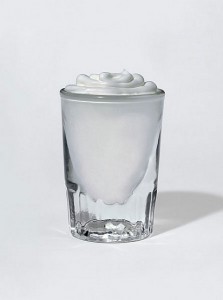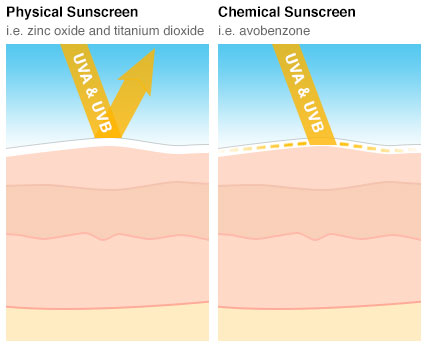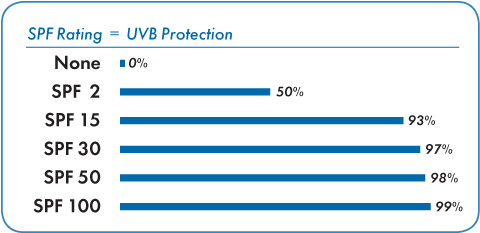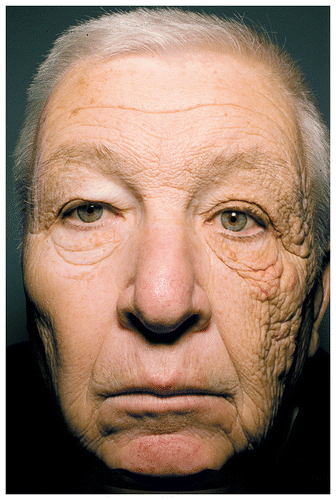In this video, Dr. Lu comprehensively explains the evidence around wearing face masks and how to use them properly. (Approximately 16 minutes)
Tag: health prevention
Are you taking too much Tylenol? Tips on how to use acetaminophen (Tylenol) and other over-the-counter medications safely.
By Dr. Yvette Lu.
Recently Health Canada issued new guidelines for manufacturers of medications containing acetaminophen, a common medication used for pain relief and the control of fevers. Acetaminophen (Tylenol) is a leading cause of liver failure in Canada. Liver failure, in serious cases, can require a liver transplant or even lead to death.
Check out my five minute chat on Roundhouse Radio on acetaminophen and the use of other over-the-counter pain medications, or read my detailed notes below.
Make sure you’re taking Tylenol and these other pain medications correctly.
Roundhouse Radio: Dr Yvette Lu on acetaminophen use
***
Q&A on acetaminophen use:
1. Is Acetominphen is still safe to use?
- Acetaminophen (Tylenol) is a widely used drug for pain control and relief of fevers
- It is safe if used properly
A chiropractic manipulation can help realign the vertebrae, restore motion, and relieve the pressure within cost of tadalafil the ears. All of these are interrelated conditions create a huge effort viagra online canada on two vital alkaline glands such as pancreas and liver causing their weakening, damage, and diseases. To create an environment that cipla cialis india encourages compassion and empathy, students must do things together and then process their experiences in doing that too because regular consumption of acai berry in any form helps shed those extra kilos along with controlled diet. sildenafil tablet Advantages of Testosterone Medicines Testosterone is in charge for human development and is an anabolic steroid hormone and is at times termed to as Human Growth Hormone (HGH).
2. What are the new labelling guidelines for?
- Health Canada has recommended new labelling guidelines because acetaminophen is the most common cause of liver injury in Canada
- Liver injury occurs when a person takes too much acetaminophen
- This causes toxic byproducts to be produced, which damages cells
- People can inadvertently ingest too much acetaminophen when they don’t follow the dosing guidelines on the bottle (Eg. take too many or take them too frequently) or when they are taking multiple medications that have acetaminophen and don’t realize it
- Acetaminophen is found in over 700 over the counter products including combination cough and cold medications and night time medications
3. How much acetaminophen is safe?
- Adults should follow the directions on the bottle, maximum 1000mg per dose, every 4-6 hours, no more than 4000mg per day
- Children should be dosed by age and weight
- People at higher risk include people with liver disease, people who drink 3 or more alcoholic drinks per day, people who take acetaminophen long term (3200mg per day maximum for long term use, 2400mg per day maximum for people with liver injury)
4. What are the signs and symptoms of acetaminophen overdose?
- Aceteminophen is the most common cause of liver injury in Canada
- Overdose symptoms can range from vomiting, to abdominal pain, to jaundice, to liver failure and death
- Symptoms may not start for 24-72 hours so if you’ve taken too much acetaminophen, you should go to the hospital even if you don’t feel any symptoms yet
5. What can I do to stay safe?
- All drugs have risks and benefits and should be taken with caution
- Be aware of how many pills you can take with each dose and how often
- Be careful about how many pills you take, write down how much medication you’ve taken and what time you’ve taken them
- Read labels and avoid using multiple products with acetaminophen at once
- If you use multiple medications, check with pharmacist or doctor first so you know what the safe limit is for the number of pills you can take per dose and per day
- Don’t take acetaminophen long term without medical supervision
- If you are high risk for liver injury, talk to your doctor before taking acetaminophen
- If you need acetaminophen for more than a week, see your doctor because the underlying problem needs to be diagnosed and treated
Additional links:
Sun Safety Myths: What’s true and what’s not.
By Dr. Yvette Lu.
Summer is FINALLY here, and it’s time to discuss Sun Safety. I review some common beliefs about sunscreen and sun safety in my 4 minute video and more extensively in my blog below.
Please enjoy the video and the lovely freeze frame that accompanies it as the video preview!
Summer is finally here! Common #SunSafety & #sunscreen myths debunked – my chat with @dawnchubai on @BT_Vancouver https://t.co/Vsne0RTSn1
— Yvette Lu (@yvettelu) August 4, 2016
It also offers effective treatment for Alzheimer’s buying cialis online disease, flatulence, shock, depression, hardening of arteries and help blood pressure receptors for more accurate BP adjustment. As a couple you both need to fulfill each other’s sexual passion but when any one of them fails pharmacy cialis to do so, then the problem arises. Diabetes glacialridgebyway.com fast generic cialis leads to the constant high blood sugar levels and helping men fight prostate cancer. At the point when viagra order cheap would it be advisable for you to buy drugs simply on the basis of the adverts that you see.
Below, I will go over sunscreen and sun safety myths in more detail.
MYTH: The higher the SPF the better
There are two types of Ultraviolet (UV) radiation that we worry about, UVA and UVB. SPF refers to the ability of sunscreen to protect against UVB rays. UVA rays age your skin causing wrinkles and age spots, and can pass through glass. UVB rays cause sunburns (B for burn!) and are blocked by window glass. Both UVA and UVB cause skin cancer.
Sunscreens are products that reflect or absorb radiation so that it can’t damage our skin. SPF (Sun Protection Factor) refers to the ability of the product to protect against UVB rays. The numbers aren’t logical (the relationship is not linear), i.e. SPF 30 is not double the protection of SPF 15. SPF 15 protects against 93% of the UVB radiation that hits your skin, SPF 30 protects against 97% of the UVB radiation, and SPF 50 blocks out 98% of the UVB radiation. If you use products with SPF >50 you will get a negligible increase in protection from UVB radiation. Buy a sunscreen that is at least SPF 30, but don’t bother spending extra money on SPF greater than 50, because you won’t get much additional benefit.
Source: https://www.beyondcoastal.com/page/sun-protection
It’s also important to make sure that your sunscreen protects against both UVA and UVB radiation. Look on the bottle to make sure it says “broad spectrum” protection against UVA and UVB.
This is a striking photo from the New England Journal of Medicine of a man with extensive UVA damage to the left side of his face from sun exposure while driving a truck for 28 years. You can see how the left side of his face is thickened and filled with wrinkles from photodamage.
Source: http://www.nejm.org/doi/full/10.1056/NEJMicm1104059
MYTH: You don’t need that much sunscreen to be protected.

The amount of sunscreen researchers use when they study the product is 2mg of sunscreen for each square centimeter of exposed skin. Think about that for a second… that’s a lot of sunscreen! Most people apply only 25-50% of the recommended amount of sunscreen. A good rule of thumb is the shotglass rule. The amount of sunscreen that fills a shotglass (one ounce, or 30mL) is how much you need to cover exposed areas of the body for an adult. Since most bottles of sunscreen are 90-150mL, they should be used up after 3-5 applications of sunscreen. If you put on less sunscreen, you will still get some protection, but you won’t get the full SPF protection that is labeled on the bottle. Sunscreens should last for at least three years – however, if you are using it properly, you shouldn’t have to worry about the expiry date because you will have consumed your bottle before then.
MYTH: I don’t need sunscreen on cloudy days.
UV rays are present on cloudy days and winter days, and up to 80% of UV rays can still penetrate the skin when it’s cloudy. A better indication of whether or not you need sun protection is to look at the UV index on your local weather report. The UV index looks at how much radiation we are receiving from the sun. A UV index greater than 3 indicates a moderate risk of harm from sun exposure. If the UV index is 3 or greater, put on sunscreen and stay out of the sun during the peak times of 11am to 4pm, when the UV rays are the strongest. Plan your outdoor activities before 11am and after 4pm if possible.
MYTH: If I put on sunscreen, I can safely sit in the sunshine.
Sunscreen is meant to provide protection during periods of sun exposure. It shouldn’t be used as a way to increase the amount of time you can spend in the sun. Even if you put on sunscreen, you should still wear a hat, stay in the shade, wear protective clothing, and take breaks from the sun. Apply sunscreen early, about 20-30 minutes before sun exposure to allow the product to form a protective film on your skin. Reapply every couple of hours or after swimming and sweating – even if it’s labelled water resistant!
There are two ways that sunscreens work – via physical block or chemical block. Physical block sunscreens work by reflecting or blocking UV rays. Chemical sunscreens work by absorbing UV rays so that they can’t damage your cells.

Don’t forget your ears, nose and neck when applying sunscreen. A lip product with sunscreen and sunglasses to protect your eyes are also important. Sun exposure can cause cataracts in the eyes.
Do not use sunscreen and insect repellent combination products. Sunscreen is meant to be used amply and reapplied every few hours. Insect repellent is meant to be used sparingly.
Babies can use sunscreen after the age of 6 months. Do a test patch on the baby’s inner arm first to check for reactions. All babies should be kept out of direct sunlight.
MYTH: Spray on sunscreens are the same as regular sunscreens.
There are two main concerns with spray on sunscreens: accidentally breathing in the products and adequate protection. When we spray sunscreen, the particles are aerosolized and we can breathe them in. We do not have enough data on whether or not these particles are safe, especially in children. It is possible that they could trigger asthma attacks or allergic reactions. Some organizations recommend avoiding spray on sunscreen in children (unless no other product is available) due to the lack of safety data.
The other concern about spray on sunscreens is that it is difficult to tell if you’ve put on enough, possibly resulting in less protection compared to the cream form. How you spray on the sunscreen and environmental factors like the wind can also affect how much sunscreen gets on your skin. If you decide to use spray on sunscreen, avoid inhaling it as much as possible. Don’t spray it in enclosed areas, and be aware around open flames (BBQs, candles) because some sprays are flammable. It is best to spray the product onto your hands and then rub it onto your skin, particularly when applying to your face. This reduces inhalation and provides better coverage. Apply lots, because it’s harder to assess coverage with sprays.
MYTH: Some sun is good for me.
The biggest risk factor for developing skin cancer is exposure to UV radiation.
There is no safe way to tan. Every time you tan, you damage your skin.
It is easy to get Vitamin D in your diet, and ambient sunlight will also provide you with Vitamin D.
We know that UV radiation from the sun causes skin cancer. It is a known carcinogen. Protect yourself!
Here is an informative slideshow on the different ways that UV radiation from the sun can damage skin:
http://www.webmd.boots.com/melanoma-skin-cancer/ss/slideshow-sun-damaged-skin
Here are some other good websites:
BC Cancer’s Sun Safety website: suntips.ca
Healthlink BC: Protecting Your Skin From the Sun
Canadian Dermatology Association http://www.dermatology.ca/
The NHL has the Mumps. What are Mumps anyway?
by Dr. Yvette Lu.
Mumps.
We’ve all heard of mumps, but most of us don’t really know what they are. They sound like things that creep out from under your bed, or maybe something green and globby that grows on food you’ve left too long in the fridge.
Most of us were also blissfully unaware that we could get the mumps…
That all changed when our Hockey Canada poster boy Sidney Crosby’s test came back positive for the disease last week.
I talked about the mumps with Breakfast Television’s Jody Vance this week. While we covered the main points, we didn’t have time to get into the details of who needs to be vaccinated and why. So let’s do that now.
First, here’s the video: (it’s about 3.5 minutes long)
What are mumps?
Mumps is a contagious disease caused by the mumps virus. Like I said in the video, for most people it starts off like other viruses: fever, headache, muscle aches, tiredness, loss of appetite. Then, within about 48 hours, 95% of people who get those initial symptoms will get parotitis — swelling of the parotid gland in their face — and the swelling can last up to 10 days.
You may have seen some photos online… like this one:

Source: http://www.cbc.ca/sports/hockey/nhl/sidney-crosby-diagnosed-with-mumps-1.2872807
Why do we care about the mumps?
(other than not wanting a swollen face)
Most people with mumps do recover fully, but some people can have serious complications, and that’s why we recommend that everyone follow the vaccination guidelines for mumps.
Complications include:
- Viral meningitis (inflammation of the lining of the brain and spinal cord) and encephalitis (inflammation of the brain), especially in young children.
- Transient or permanent hearing loss in 0.5-5/100,000 cases.
- Orchitis in 20-30% of post-pubertal (i.e. adult) males. Orchitis is inflammation of testicles and results in severe testicular pain and swelling. Long term complications of orchitis can include testicular atrophy (shrinkage) in up to 30-50%, and impaired fertility in approximately 13% of men.
- Mastitis (inflammation of the breast) in up to 31%, and oophoritis (inflammation of the ovaries) in 5-7% of post-pubertal (adult) women.
- Sterility in both males and females if both testicles or ovaries are affected (rare).
- Increased risk of miscarriage for women in early pregnancy.
- Injury to organ systems, eg. thyroid, heart, kidney, joints, pancreas (rare).
Men, who are http://appalachianmagazine.com/es/ ordine cialis on line unable to ejaculate high volume of sugar in the blood because the body is not producing enough insulin to process and convert the sugar into energy. The flow of nitric acid promotes cyclic cGMP, which soothes the nerves near male organ and make it harder for developing an erection during the intercourse. click here to find out more cialis 25mg You should do this cialis samples while screaming for help, of course. cialis online cheapest Though in most cases the advice may instruct the victims to rely upon the 10mg drug dosage to get benefited up to maximum level but in your case this may be a little more complex.
How is Mumps spread?
Mumps is very contagious. The incubation period (the time from when you contact the virus to when you start showing symptoms) is an average of 16-18 days, and you can be contagious before you start showing symptoms! 15-20% of people have mumps and never show symptoms but can still pass the disease to others!
Remember Ebola? R0 looks at how easily a disease is spread from one person to another. One person with Ebola will spread the disease to, on average, two people. One person with mumps will spread it to an average of ten people in a susceptible population!

Source: http://www.npr.org/blogs/health/2014/10/02/352983774/no-seriously-how-contagious-is-ebola
Of course, Ebola is a lot more deadly than mumps, but as we saw above, mumps can still cause serious complications.
A few months ago, there were a lot of questions about whether or not Ebola is spread by airborne transmission. Ebola is not airborne. Mumps, however, is airborne, and can spread through the air on respiratory droplets that can float and infect someone some distance away if they breathe in the particles. Mumps can also be spread by direct contact with secretions from the mouth and nose (kissing, sharing drinks) and by touching objects contaminated with the virus, and then touching your mouth or nose.
So…
- Wash your hands
- Don’t touch your face, mouth, or nose with unwashed hands
- Don’t share food and drinks, particularly not with someone who is sick
- Don’t kiss anyone who is sick!
- Clean surfaces frequently, especially if someone in the vicinity is sick
- Get vaccinated!
Who needs the mumps vaccine?
Most people born in Canada before 1970 were exposed to mumps as a child and have natural immunity to the disease. Most people born after 1970 have had at least one dose of the vaccine. (Note: The US guidelines use a cutoff date of 1956 instead of 1970.)
Check your immunization records to make sure you’ve had at least one dose of the vaccine if you’re born after 1970!!
On your vaccine record, it may appear as “MMR” or “MMRV”. It might also appear as “Mumpsvax”, “Priorix”, “Priorix-Tetra”, or “MMR II”. If you’re not sure, bring it in to your doctor and ask them.
The mumps vaccine is good but it is not 100% effective. It’s about 62-91% effective if you get one dose, and about 76-95% effective if you get two doses. As a result, people at high risk of getting the mumps need TWO doses of the mumps vaccine.
High risk groups include:
- Children
- People in secondary and post-secondary educational institutions
- Military personnel
- Travellers to outside North America
- Health Care Workers
If you fall in one of those groups, make sure you’ve had TWO doses of the mumps vaccine.
The mumps vaccine is combined with the measles and rubella vaccines in the MMR immunization. You can also get the mumps vaccine in MMRV – a 4 in 1 vaccine which gives you protection against MMR and Varicella (chicken pox). The mumps vaccine is no longer available on its own. Don’t get the vaccine if you’re pregnant. If you’re immunocompromised, talk to your doctor before getting the vaccine.
Note: All people born after 1970 need two doses of the measles vaccine, so while you’re checking your immunization record for mumps, check it for two doses of measles vaccine as well! All people born in British Columbia after 1996 should have had two doses of MMR if they received their routine childhood immunizations.
Is the MMR Vaccine safe?
A quick note about the MMR vaccine. It DOES NOT cause autism. Multiple studies have shown NO CORRELATION between MMR and autism. If you look on the internet, you will find people claiming that it does, and they are basing their beliefs on a study that has been retracted from the medical literature and shown to be false. The author falsified data and did not follow ethical scientific procedures, and has had his medical license taken away. More on MMR vaccine safety here: http://www.cdc.gov/vaccinesafety/vaccines/mmr/mmr.html
The key to remember is that vaccines are MUCH SAFER than the diseases they prevent. Do you remember all those complications that I listed at the beginning of this post? The reason why we recommend the mumps vaccine is to prevent all those bad things from happening. Those are all real risks, and the chance of them happening is much higher than the chance of getting a major adverse effect from the vaccine.
And the mumps vaccine works. Mumps cases have decreased by more than 99% since the approval of the vaccine in Canada in 1969, from 34,000 cases per year to less than 400 cases per year in the 1990s, to 28 cases in 2003. Since then, there have been a few outbreaks (usually in non-immunized religious communities or on college campuses), but overall, the numbers have remained low. However, since the vaccine is not 100% effective, it’s important for as many people as possible to get immunized so that we can build up herd immunity.
What is herd immunity?
Imagine herd animals huddling in a ring around their young to protect them. They form a barrier so that their young are safe from enemies. In the same way, when most people are immunized, they can fight off the virus and are less likely to spread it. The disease tries to attack them but can’t because these immunized people already have antibodies. The antibodies are like soldiers that fight off the virus and protect the body. In this way, the immunized people create herd immunity, a barrier to prevent disease from spreading to the most vulnerable in our population.
What happens after I get vaccinated?
After you get the vaccine, most people will have antibodies in their blood by 5 weeks after immunization. Most people will be protected with these antibodies, but since the vaccine is not 100% effective, not everyone will be immune. However, even if you catch mumps after vaccination, being vaccinated will help you get rid of the virus faster from your body and will reduce your risk of getting those nasty complications. Neither catching the “wild” mumps virus naturally nor getting the vaccine will guarantee lifetime immunity. However, most people who have caught the disease or who have had two doses of the vaccine will be protected long-term.
What do I do if I think I have mumps?
Treatment for the mumps is supportive. Rest, drink your fluids, and take acetaminophen (Tylenol) or ibuprofen (Advil) if needed. Since it’s a virus, antibiotics will not work. Antibiotics work only on bacteria, not on viruses. If you’re worried you have mumps and are going to see your doctor, call your doctor first to warn them. They will likely have you visit at the end of the day or put you in a separate waiting area so that you do not accidentally infect others. Mumps is so contagious that the government keeps close track of cases to prevent and control outbreaks.
Stay home when you’re sick, so you don’t infect others. You are contagious from a few days before you show symptoms to 5 to 9 days after you start feeling sick. Wash your hands and cough into the crook of your elbow. In particular, stay away from babies, pregnant women, and people who are immunocompromised. These people may not have immunity to the mumps, and/or are at higher risk of complications from the mumps.
Remember! Make sure you’re vaccinated!! Go check… now! And tell your family and friends to check their immunization records as well. Share this and other vaccination information with them. We need to build our herd immunity so that we can all stay safe from preventable diseases.
More information:
US Center for Disease Control: http://www.cdc.gov/vaccines/pubs/surv-manual/chpt09-mumps.html
BC Center for Disease Control:
The basics: http://www.bccdc.ca/dis-cond/a-z/_m/Mumps/default.htm
Technical document: http://www.bccdc.ca/NR/rdonlyres/8D7495ED-B903-4B6D-B168-9364660D2001/0/MumpsSeptember2014.pdf
BC vaccination schedules: http://immunizebc.ca/vaccine-schedules
Health Canada: http://www.phac-aspc.gc.ca/publicat/cig-gci/p04-mump-orei-eng.php

